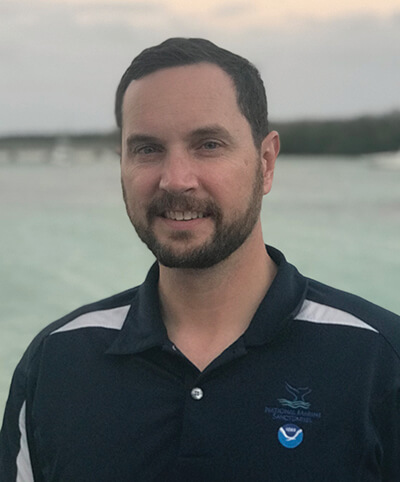From the Director

2020 has been a remarkable and challenging year. Our nation is simultaneously trying to cure a global pandemic, confront institutional racisms and injustices, stabilize our economy, and respond to natural disasters. As we navigate this difficult time, NOAA’s Office of National Marine Sanctuaries is confronting these challenges head-on by putting our people first and examining ways that we can be part of the solution in our communities as we further our mission. We are focused on having “all hands on deck” to meet the challenges of today and tomorrow.
To be part of the solution, we must make national marine sanctuaries, marine national monuments, and other marine protected areas more accessible and relevant to all Americans. We need to accept that for far too long the ocean conservation community has not been as strong as it could be because it’s not as inclusive as it should be. If we are to be part of the solution in communities, we must reflect the diversity of the communities we serve.
The challenges of 2020 have sharpened our resolve to examine our approach to managing the nation's system of underwater parks. In addition to expanding opportunities for all members of our communities to contribute to our success, we are working hard to make them more accessible. Enhanced distance learning programs and stunning 360 degree virtual reality experiences allow us to bring national marine sanctuaries into your home.
As we look ahead to our 50th anniversary in 2022, the coming year is shaping up to be equally momentous. We have sanctuaries nominated in the Great Lakes that are moving steadily toward fruition, while several existing national marine sanctuaries are looking to expand.
These new and expanded sanctuaries will help us respond to growing threats to our ocean and Great Lakes. With climate change and other human impacts – the spread of invasive species, increasing runoff, pollutants, and marine debris – our marine world is transforming before our eyes. As we respond, we need to be nimble and think differently. Our National Marine Sanctuary System is a key proving ground for trying out new techniques that will help us build a more resilient and sustainable world.
Throughout our system, we’re developing new approaches to restore ecosystems impacted by changing ocean conditions. This past winter, Florida Keys National Marine Sanctuary and NOAA’s Office of Habitat Conservation worked with many partners to launch Mission: Iconic Reefs, one of the largest investments in reef restoration anywhere in the world. By using innovative methods like growing healthy corals in tanks and outplanting them on reefs, the sanctuary, Mote Marine Laboratory, Coral Restoration FoundationTM, and others are taking bold action to restore the sanctuary’s coral reefs. On the West Coast, Greater Farallones National Marine Sanctuary and the Greater Farallones Association are implementing a community- based project to restore bull kelp ecosystems and ensure the continued health of these biodiverse habitats.
Our capacity to manage these special places relies on our ability to invest in infrastructure. We are constantly working to maintain and update our small boat fleet, which provides a platform for research, restoration, and resource protection throughout the system. Plus, we’re always thinking creatively and testing out new technologies. With the support of NOAA’s new Unoccupied Systems Strategy, we’re using small unoccupied aircraft systems to help disentangle whales in Hawaiian Islands Humpback Whale National Marine Sanctuary, while autonomous underwater vehicles, or gliders, are helping us monitor ecosystems from New England to American Samoa.
2020 marks a new decade, one that will undoubtedly unleash new challenges, but also new opportunities. The National Marine Sanctuary System is ready for both – and I hope you’ll join us in protecting this blue planet for generations to come.

John Armor, Director


